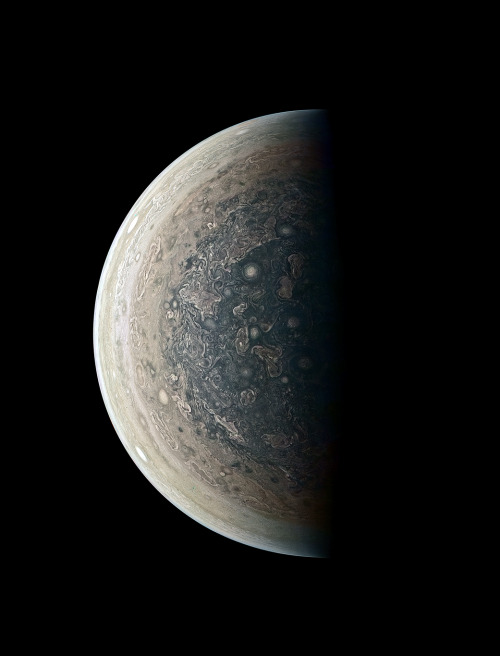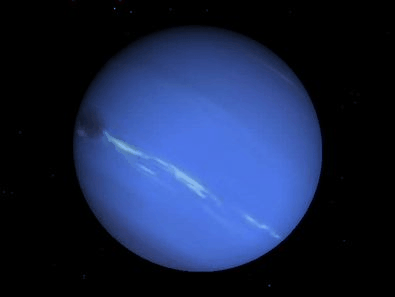66 posts
Latest Posts by weirdtalesanduniverse-blog - Page 2

NGC 206 and the Star Clouds of Andromeda: The large stellar association cataloged as NGC 206 is nestled within the dusty arms of the neighboring Andromeda galaxy. Also known as M31, the spiral galaxy is a mere 2.5 million light-years away. NGC 206 is near top center in this gorgeous close-up of the southwestern extent of Andromedas disk, a remarkable composite of data from space and ground-based observatories. The bright, blue stars of NGC 206 indicate its youth. In fact, its youngest massive stars are less than 10 million years old. Much larger than the open or galactic clusters of young stars in the disk of our Milky Way galaxy, NGC 206 spans about 4,000 light-years. Thats comparable in size to the giant stellar nurseries NGC 604 in nearby spiral M33 and the Tarantula Nebula, in the Large Magellanic Cloud. Star forming sites within Andromeda are revealed by the telltale reddish emission from clouds of ionized hydrogen gas. via NASA
js
darkness flows over milky skin like water, a mother’s mouth condemns her daughter beauty only takes you so far, further, the furthest away you could ever be taken. stripped bare and chained down you are still more than you seem to be, waiting for Death, who does not come in the form of the monster circling the waves, who does not come as the boy wielding a sword brandishing the title hero as though it was earned- it wasn’t, you saved yourself from the divine fate. Death is nothing more than the night sky where you are to stay permanently and you think, just maybe, you may be in love, a trillion kisses on your lips each so bright you shine brilliantly. Cetus never stood a chance. oh, and if the Gods could see you now so high above their mount, they thought immortality was theirs but the marble crumbles while you are a galaxy that can not die. Andromeda The Brave, Ruler of Men, Celestial Body: I think it is time someone rewrites your story.
stellar evolution || O.L. (via poetbitesback)

Few stars are visible such as the Andromeda galaxy. But the majority of the stars that you can observe with the naked eye are in this small area of the Milky Way.








Requested: Heleus Cluster

A spiral in Andromeda




saturnz barz / we got the power / ascension / andromeda

Meteor and the Andromeda Galaxy

| Stranded |
![Franz Von Stuck (German, 1863-1928), Sternschnuppen [Shooting Stars] (Franz And Mary Stuck), 1912. Oil](https://64.media.tumblr.com/7c7771692eb64c7b9e08c92a81cc9b3f/tumblr_oro819Nzxi1u6x3h6o1_500.jpg)
Franz von Stuck (German, 1863-1928), Sternschnuppen [Shooting Stars] (Franz and Mary Stuck), 1912. Oil on panel, 65 x 58.5 cm.

lovely,



Art by Lim Heng Swee



Our Solar system

A White Oval Cloud on Jupiter from Juno

Jupiter From Below
Image of the south pole of Jupiter, captured by the Juno spacecraft. Cyclones swirl around the south pole, and white oval storms can be seen near the limb - the apparent edge of the planet.
Image Credit: NASA / JPL-Caltech / Roman Tkachenko

Clouds of Jupiter


A day on Neptune is just 16 hours long
Image credit: Oscar Malet

Neptune
Equatorial Diameter: 48.682 km Satellites: 14 Notable satellites: Triton Orbit Distance: 4.498.396.441 (30 AU) Orbit Period: 164 Earth years Surface Temperature: -201°C Discovered Date: September 23rd 1846 Discovered By: Urbain Le Verrier & Johann Galle

Neptune and triton captured by Voyager 2 on their way out of the solar system in August 1989.
Credit: NASA / Voyager 2




Planet Uranus ♅
Equatorial Diameter: 51.118 km Satellites: 27 Notable satellites: Oberon, Titania, Miranda, Ariel & Umbriel Orbit Distance: 2.870.658.186 km (19 AU) Orbit Period: 84 Earth years Surface Temperature: -220°C Discovered Date: March 13th 1781 Discovered By: William Herschel

This is a view of Uranus taken by Voyager 2.
Credit: NASA / Voyager2
